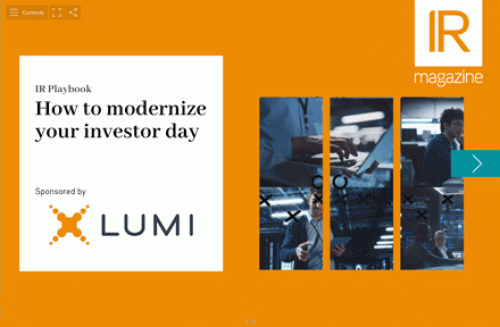Dr Sarah Fakih joined CureVac – one of just a handful of public biotechs focused on messenger RNA (mRNA) technology – in July 2020, as the Tübingen, Germany-headquartered firm was preparing to list on Nasdaq.
The company was officially founded in 2000, after founder Dr Ingmar Hoerr (a doctoral student at the time) made a discovery that could ultimately turn the fight against Covid-19. He found that when it was ‘administered directly into tissue, the historically unstable biomolecule mRNA could be used as a therapeutic vaccine or agent,’ according to the company website. CureVac had been working on a number of uses for its mRNA technology – including a rabies vaccine and oncology drugs – when the Covid-19 pandemic thrust the company and its mRNA technology into the spotlight.
CureVac went public on August 14 this year, raising $213.3 mn on its debut and almost tripling its market cap in the first two days of trading. The company also has backing from Bill Gates, pharmaceuticals giant GlaxoSmithKline and the German state, to name a few.
So what was it like coming into a company under such focus? When Fakih joined CureVac, it was already involved in trials for its Covid-19 vaccine – based on a technology yet to produce an approved drug – and about to go public. ‘The IPO experience was pretty much a baptism by fire as I’d only just joined CureVac, so I was thrown right into the middle of it,’ she tells IR Magazine. ‘It was a very, very dynamic time.’
Processes were already in place to move forward with the IPO, explains Fakih, adding that the team held ‘dozens and dozens’ of meetings and investor calls – virtually, of course – with Fakih spending days in a room with senior management on meetings and calls that often ran into the night.
‘It was a very energized kind of environment,’ she recalls. ‘I reflect on that experience as an exhilarating time.’
Of course, there was also a lot of pressure. Not only was everything being done virtually – already a strange environment for an IPO – but CureVac’s work on a potential Covid-19 vaccine further fueled the pressure.
‘There was a lot of international visibility, media and investor attention,’ Fakih says, adding that this really hasn’t abated since the company’s debut. ‘The Covid-19 vaccine we are developing… is of such great public importance that the sense of urgency and the momentum really has continued since the IPO.’
Effective tech
Fakih says she was surprised at how effective technology proved for investor meetings and conferences.
‘You always have an operator on video who connects you with your respective meetings and makes sure everyone is on time, who chases up people if they don’t connect in time,’ she says. Even across different technology platforms, her experience has been that it is very easy to talk to people normally – ‘and to see them, because I think the interpersonal interaction that takes place, even though you’re not always aware of it, is really important.’
This is something that in biotech communications is especially valuable. ‘The things you are communicating are very much a projection of future successes, of future potential, of a pipeline of clinical trials, of things that are very future-oriented and where that future value is associated with an additional risk,’ explains Fakih.
‘Looking at each other and having a kind of personal interaction in these conversations is very important. In our industry you are often selling on the hope of tomorrow, and people need to watch you to see that you’re credible and to understand what kind of person you are.’
The conversations themselves are ‘surprisingly detailed scientific discussions,’ adds Fakih. ‘And I think this comes down to the fact that the mRNA vaccine, or the mRNA technology, is only half-proven. It has massive potential, it is in numerous clinical trials, it shows very promising results but there is no approved drug yet.’
The investors and analysts she talks to are up to the task, however: ‘They have PhDs, post-docs, they are immunologists – they are very well-trained scientists.’ Despite the ‘very technical’ nature of CureVac’s work – and that of other companies in the sector – Fakih warns that biotechs have to be careful not to be ‘so science-focused and so deeply embedded in their own technology that their story is too difficult to understand for all the stakeholders and shareholders who are not scientists.’
The Covid-19 spotlight
Of course, CureVac isn’t all about coronavirus, but it is Covid-19 that has really pushed it into the spotlight. ‘Certainly the whole Covid-19 situation brought the company to the next level,’ says Fakih.
So having successfully floated the company, where has Fakih’s IR focus been? ‘Following the IPO and having this international visibility, we are working to establish our footprint in the investor community and reach out to new investors,’ she says.
‘We are still very much at the beginning, so we’re building up our investor relations infrastructure and building up the community of investors and analysts. We are talking to the investment community, and really just telling people as much as possible about the technology and the value proposition.’
Which isn’t much different from the regular IR role, Fakih admits, except that most discussions today are centered on Covid-19 and the hunt for a vaccine. She acknowledges that this rapid analyst expansion isn’t usual in the first six months or so after a listing – but this is 2020 and things are different.
‘The IPO was a big milestone – it came with a lot of visibility, a lot of attention,’ she says – and it’s a momentum she wants to maintain. The firm’s Covid-19 clinical data should become available before the end of the year so the company’s profile is likely to remain high. ‘I know there are other big milestones coming,’ Fakih concludes.










